12 Best Swimming Holes in U.S for 2024: Hidden Escapes
- April 2, 2024
- 0 comment
Discover 2024’s top 12 hidden swimming holes in the U.S.! Dive into secret spots for unforgettable summer escapes. Explore now! As the summer of 2024 approaches, the quest for the perfect cool-down spots begins. Away from the crowded beaches and bustling city pools lie America’s best-kept secrets: a selection of the most serene, beautiful, and refreshing swimming holes. These hidden gems offer not just a dip in crystal-clear waters but an escape into nature’s embrace, where every splash tells a story of discovery and every view is a snapshot of untouched beauty. In this guide, we unveil secluded paradises, guiding you to spots where memories are made, and summer adventures come to life.
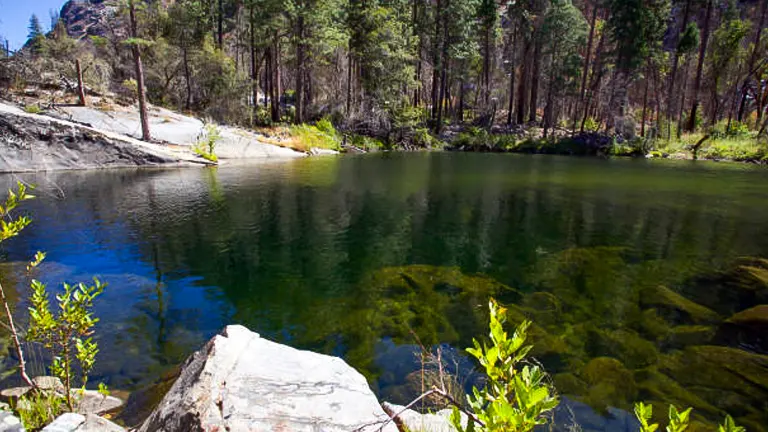
Join us as we explore the natural wonders that await in America’s great outdoors, from the sun-drenched ledges of secluded rivers to the deep, mysterious pools of ancient forests. Each location has been carefully selected for its unique charm, accessibility, and the promise of adventure, ensuring your 2024 summer is filled with moments of awe and relaxation. So, pack your swimsuits and sunscreens, for we are about to dive into the heart of America’s most breathtaking swimming holes.
List of 12 Best Swimming Holes in U.S for 2024
- Fairy Stone State Park
- Jacob’s Well
- Havasu Falls
- Sliding Rock
- Blue Hole
- Devil’s Den
- Caddo Lake
- Opal Pool
- Quincy Quarries
- Crater Lake
- Johnson’s Shut-Ins
- Seven Sacred Pools
Why Choose Hidden Swimming Holes?

Hidden swimming holes represent a slice of paradise for those willing to venture off the beaten path. Unlike their more popular counterparts, these secluded spots offer peace and intimacy with nature, often accompanied by stunning natural backdrops that can’t be found anywhere else. Choosing a hidden swimming hole for your next summer escape means enjoying unspoiled environments, cleaner water, and the chance to experience the tranquility of nature without the interference of large crowds. Moreover, these hidden escapes allow for a genuine adventure, as reaching them sometimes involves hiking through beautiful landscapes, offering an added layer of engagement with the natural world.
Criteria for Selection
In curating this list of the 12 best swimming holes in the U.S. for 2024, we employed a rigorous set of criteria to ensure each destination offers a unique and memorable experience. The selection process emphasized:
- Water Clarity and Quality: Only spots with pristine, clear waters that invite an invigorating swim were considered.
- Accessibility: While the essence of a hidden escape is its seclusion, we ensured that each location remains accessible to those with a genuine interest in discovery, without requiring extreme measures to reach.
- Safety: Areas known for their safety, both in terms of water conditions and the surrounding environment, were prioritized to ensure a worry-free experience for visitors.
- Environmental Significance: Preference was given to swimming holes that hold ecological importance or contribute to the beauty of their natural habitat, highlighting the need for preservation.
- Unique Features: Each selected swimming hole boasts unique characteristics, from breathtaking waterfalls to underwater caves, providing more than just a place to swim but an extraordinary natural phenomenon to explore.
The 12 Best Swimming Holes in U.S for 2024
1. Fairy Stone State Park, Virginia
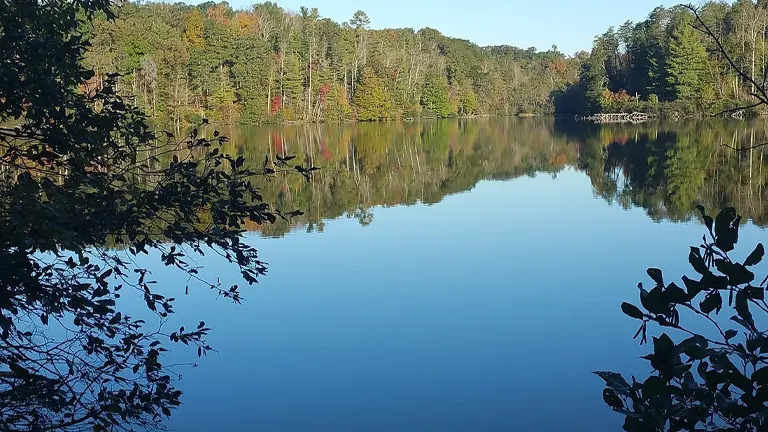
Fairy Stone State Park offers a tranquil swimming hole surrounded by the natural beauty of Virginia. It’s well-known not only for its refreshing waters but also for the presence of fairy stones, unique mineral formations that have captivated visitors with their supposed magical properties. The park provides a perfect setting for a day of exploration, offering both relaxation in its calm waters and adventure on its trails.
- How to Get There: Drive through scenic Virginia countryside and follow a short trail to the swimming hole.
- What Makes It Special: The fairy stones, unique to the area, are a geological and cultural highlight.
- Things to Do: Hiking, fishing, and searching for fairy stones.
- Conservation Efforts: Visitors are encouraged to follow Leave No Trace principles to preserve the park’s natural beauty.
- Best Time to Visit: Ideal from late spring to early fall, when the weather is warm and nature is in full bloom.
2. Jacob’s Well, Texas
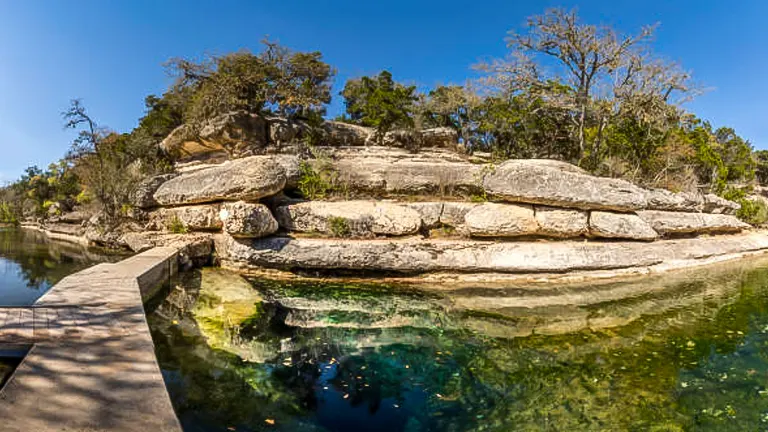
Jacob’s Well in Texas is a clear, spring-fed swimming hole that draws visitors with its crystal waters and an adventurous vibe. The spring is famous for its depth and the underwater cave system that adventurous divers can explore. Its clarity and cool temperatures make it a refreshing retreat from the Texas heat, offering both a challenge for divers and a picturesque spot for casual swimmers.
- How to Get There: Located near Wimberley, easily accessible by car with a parking area and a short walk to the well.
- What Makes It Special: The underwater caves and crystal-clear water offer a unique swimming experience.
- Things to Do: Cliff jumping, snorkeling, and enjoying the natural surroundings.
- Conservation Efforts: Swimming access is regulated to protect the ecosystem; reservations may be required.
- Best Time to Visit: Early summer for optimal conditions and crowd management.
3. Havasu Falls, Arizona
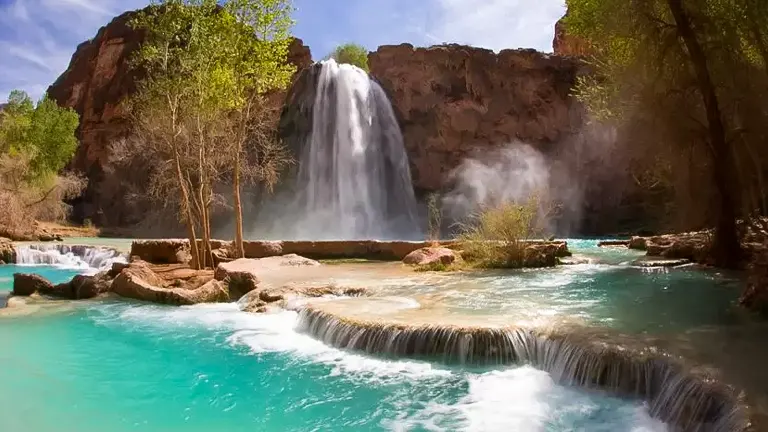
Havasu Falls is a breathtakingly beautiful waterfall located in the Grand Canyon, known for its vivid blue-green waters set against red rock formations. This remote paradise requires a bit of effort to reach but rewards visitors with one of the most unforgettable swimming experiences in the United States. The falls are a part of the Havasupai tribal lands, and visiting them offers a unique opportunity to explore a protected natural wonder.
- How to Get There: Requires a hiking permit and a 10-mile trek through the Grand Canyon.
- What Makes It Special: The stunning contrast of turquoise waters against the canyon’s red rocks.
- Things to Do: Swimming, camping, and exploring nearby natural attractions.
- Conservation Efforts: Managed by the Havasupai Tribe to ensure the preservation of the area.
- Best Time to Visit: Spring and fall offer cooler temperatures for the hike and less crowded conditions.
4. Sliding Rock, North Carolina
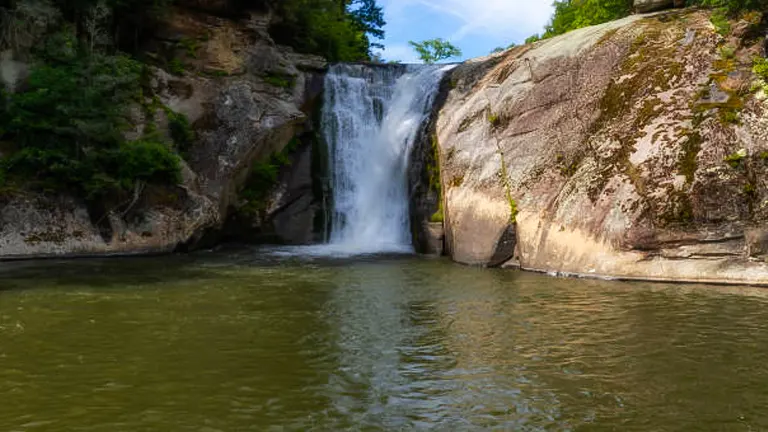
Sliding Rock is a natural water slide located in the Pisgah National Forest, North Carolina. It’s a 60-foot smooth rock that funnels visitors into a cold, large pool at the bottom. This spot is perfect for families and anyone looking to add a bit of natural adventure to their swim. The forest setting provides a beautiful backdrop for a day of outdoor fun.
- How to Get There: Accessible by car, with parking available near the site.
- What Makes It Special: The natural rock slide offers a unique and exhilarating way to cool off.
- Things to Do: Sliding, picnicking, and hiking in the surrounding forest.
- Conservation Efforts: Maintained by the U.S. Forest Service, which provides amenities and safety measures.
- Best Time to Visit: Summer months, when the water flow is ideal for sliding.
5. Blue Hole, New Mexico
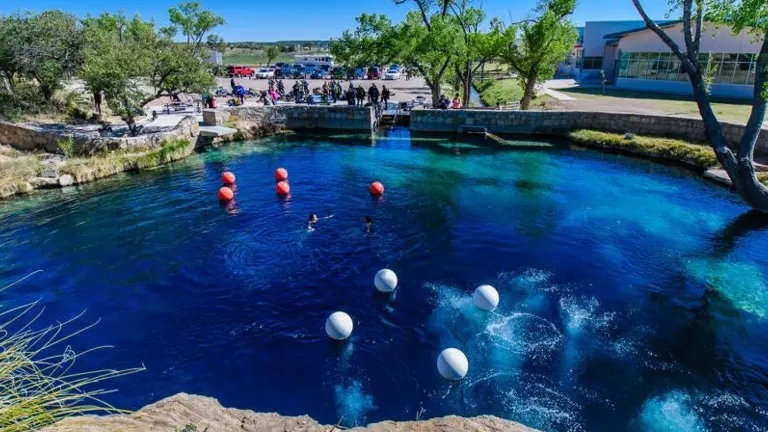
The Blue Hole of New Mexico is an oasis in the desert, a deep, bell-shaped pool renowned for its stunning, crystal-clear blue water. This geological marvel draws divers and swimmers alike, offering a cool respite from the arid surroundings. It’s a rare, artesian spring that serves as both a natural wonder and a popular swimming destination.
- How to Get There: Situated in Santa Rosa, it’s easily accessible by car, with parking near the site.
- What Makes It Special: The incredible clarity of the water and its constant, refreshing temperature.
- Things to Do: Diving, swimming, and picnicking in the nearby areas.
- Conservation Efforts: The site is managed to preserve its pristine condition and water quality.
- Best Time to Visit: Spring and summer months for the best weather, though the water temperature remains consistent year-round.
6. Devil’s Den, Florida
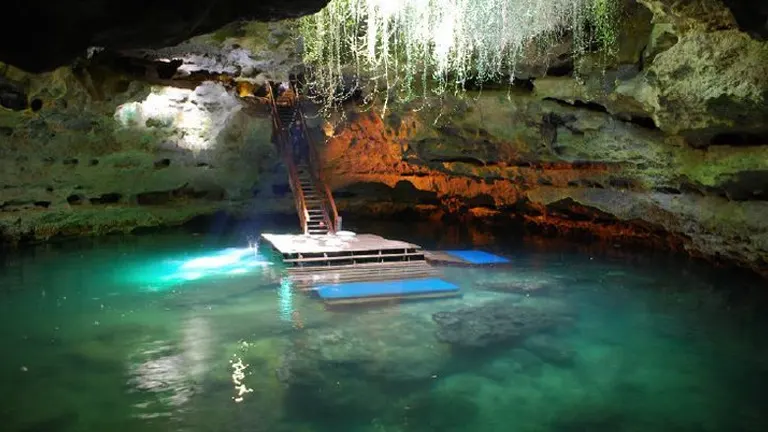
Devil’s Den is an underground spring inside a dry cave in Florida, known for its prehistoric fossil beds and year-round 72-degree water. This hidden gem offers snorkeling and scuba diving in waters that are as clear as they are ancient. Its unique setting under a karst window provides a magical swimming experience unlike any other.
- How to Get There: Located in Williston, access is via a short descent into the cave.
- What Makes It Special: The natural underground setting and the historical significance of the site.
- Things to Do: Snorkeling, scuba diving, and exploring the surrounding nature trails.
- Conservation Efforts: Strict regulations are in place to protect the underwater ecosystem and archaeological integrity.
- Best Time to Visit: Year-round, thanks to the constant water temperature, but less crowded in the fall and winter months.
7. Caddo Lake, Texas

Caddo Lake, straddling the border between Texas and Louisiana, is a maze of bayous, wetlands, and backwaters, covered in a canopy of Spanish moss-draped cypress trees. It’s not just a swimming hole but an entire ecosystem teeming with life and history. The lake offers a tranquil, otherworldly place to paddle, fish, and immerse oneself in the beauty of a natural swamp.
- How to Get There: Easily accessible by car from both Texas and Louisiana, with several entry points around the lake.
- What Makes It Special: The mystical landscape and the biodiversity of the swamp.
- Things to Do: Kayaking, canoeing, fishing, and wildlife photography.
- Conservation Efforts: Conservation programs are in place to protect the lake’s unique ecosystem and cultural heritage.
- Best Time to Visit: Spring for the best weather and active wildlife, especially bird watching.
8. Opal Pool, Oregon
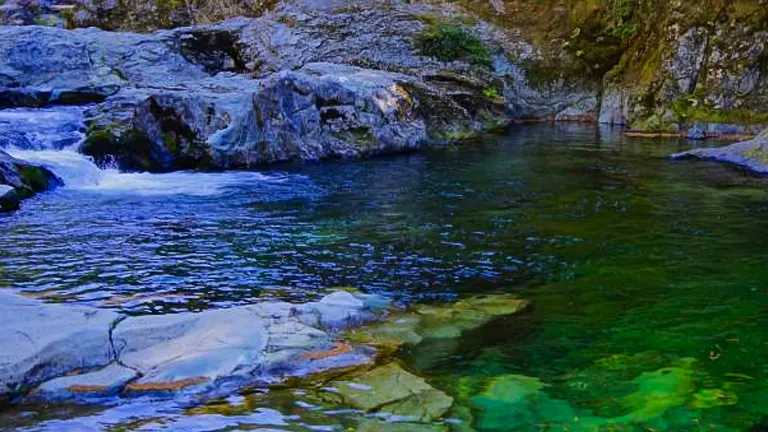
Opal Pool, a gem in the Willamette National Forest of Oregon, captivates visitors with its vibrant, opalescent waters. Tucked away in a lush, green forest, this swimming hole is reached after a rewarding hike, offering a secluded spot for those looking to plunge into nature’s tranquility. The clarity and color of the water are simply mesmerizing, making it a favorite among photographers and nature lovers.
- How to Get There: Access involves a scenic hike through the Opal Creek Wilderness Area, adding to the adventure.
- What Makes It Special: The stunning, clear turquoise water set in a forested canyon.
- Things to Do: Hiking, swimming, and enjoying the serenity of the untouched natural surroundings.
- Conservation Efforts: The area is protected to maintain its pristine condition and natural beauty.
- Best Time to Visit: Late spring through early fall, when the trail conditions are best and the water is inviting.
9. Quincy Quarries, Massachusetts
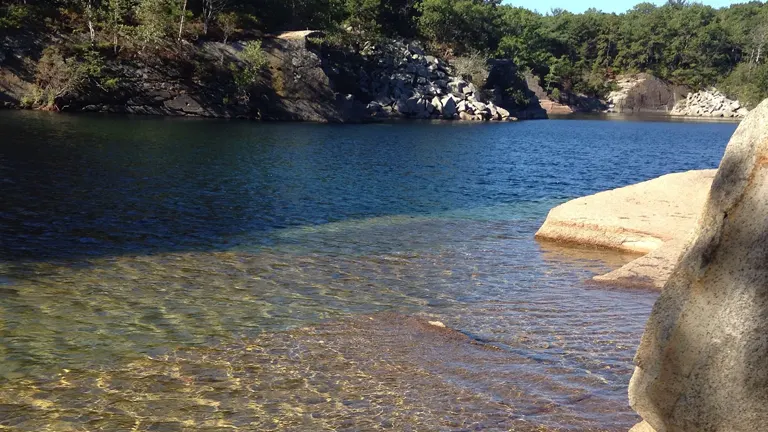
Quincy Quarries, just outside Boston, offers a unique urban escape for those seeking the thrill of cliff diving and the allure of swimming in deep, clear waters. Once a granite quarry, this area has been transformed into a recreational hotspot, combining history with adventure.
- How to Get There: Located in the Quincy area, it’s easily accessible by car, with parking available on-site.
- What Makes It Special: The dramatic cliffs and deep water make for an exciting swimming and diving experience.
- Things to Do: Cliff diving for the daring, swimming, and exploring the graffiti art that adorns the quarry walls.
- Conservation Efforts: Efforts have been made to clean and maintain the area for public use while preserving its unique character.
- Best Time to Visit: Summer months, when the water is warmest and the area is bustling with activity.
10. Crater Lake, Oregon
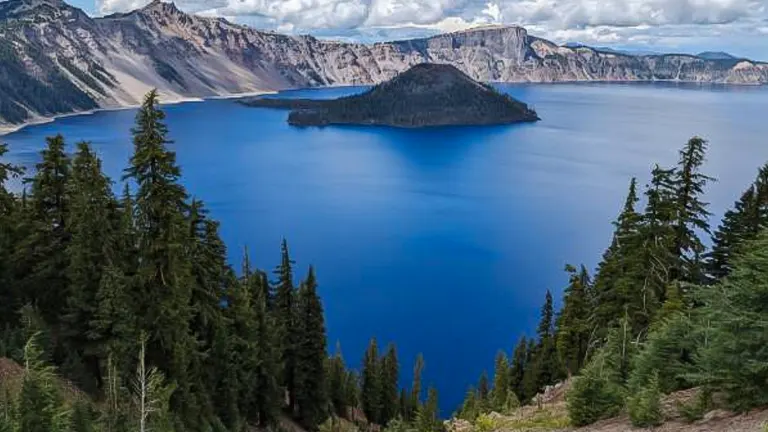
Crater Lake, the deepest lake in the U.S., offers a swimming experience like no other. With its strikingly blue, pure water, swimming here is like floating in the sky. Located in Crater Lake National Park, this caldera lake invites visitors to marvel at its beauty and dive into its mystical waters.
- How to Get There: Situated within Crater Lake National Park, accessible by car. Swimming is allowed at designated areas.
- What Makes It Special: The intense blue color and clarity of the water, combined with its geological significance.
- Things to Do: Swimming, hiking around the rim for breathtaking views, and boat tours to Wizard Island.
- Conservation Efforts: The park’s regulations aim to preserve the pristine condition of the lake and its surrounding ecosystems.
- Best Time to Visit: Late summer, when the snow has melted and the lake is most accessible.
11. Johnson’s Shut-Ins, Missouri
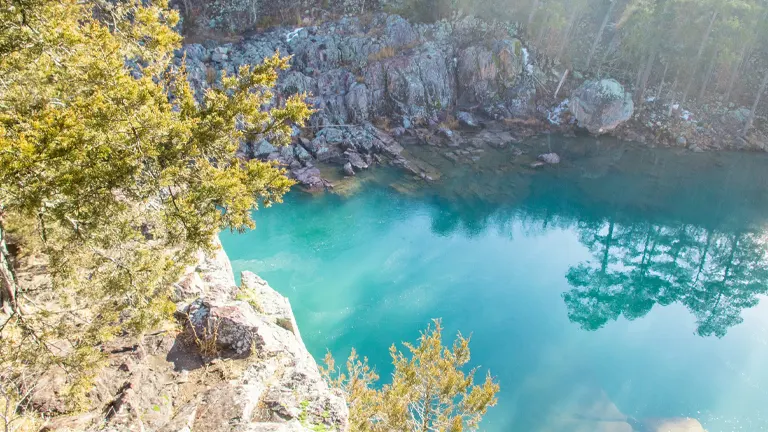
Johnson’s Shut-Ins is a natural water park in Missouri, where the Black River has carved its way through hard rock, creating pools, chutes, and waterfalls. It’s a perfect spot for families and anyone looking for a fun, natural water experience amidst stunning rock formations.
- How to Get There: Located in Reynolds County, Missouri, accessible by car with parking on-site.
- What Makes It Special: The natural water slides and pools offer a playful and unique swimming experience.
- Things to Do: Swimming, sliding, and exploring the surrounding park areas.
- Conservation Efforts: The area is managed to ensure visitor safety and protect the natural environment.
- Best Time to Visit: Spring and summer for the best water flow and temperatures.
12. Seven Sacred Pools, Hawaii

Also known as ‘Ohe’o Gulch, the Seven Sacred Pools in Maui, Hawaii, offer a picturesque series of waterfalls and pools flowing into the ocean. Part of the Haleakalā National Park, this destination is renowned for its breathtaking natural beauty and tranquil swimming spots.
- How to Get There: Located on Maui’s east coast, part of the Road to Hana. Accessible by car and a short hike.
- What Makes It Special: The series of beautiful, cascading pools set in a lush tropical environment.
- Things to Do: Swimming, hiking in the surrounding rainforest, and enjoying the scenic views.
- Conservation Efforts: Managed by the National Park Service with an emphasis on preserving the natural habitat and cultural significance.
- Best Time to Visit: Early morning to avoid crowds, especially during the dry season for safer swimming conditions.
Tips for Planning Your Visit
Visiting these hidden escapes requires more than just showing up. To ensure a safe and enjoyable experience, consider the following tips:
- Check Access and Regulations: Before heading out, verify the current access status and any specific visitation rules of the swimming hole. Some locations might require reservations, permits, or have seasonal restrictions.
- Prepare for the Journey: Many of these spots are off the beaten path. Pack essentials like water, snacks, sunscreen, and a first aid kit. Don’t forget appropriate footwear for hikes and water shoes for rocky or slippery swimming areas.
- Leave No Trace: Keep these natural wonders pristine for future visitors by packing out all trash, respecting wildlife, and staying on designated trails.
- Safety First: Always assess water conditions upon arrival. Be mindful of weather changes, especially in areas prone to sudden rain or flash floods. Never dive into unfamiliar waters without checking depth and obstacles first.
Environmental Awareness and Preservation
The beauty and allure of these swimming holes come with a responsibility to protect and preserve them. Here’s how you can contribute:
- Respect Natural Habitats: Avoid disturbing the natural environment. This includes not touching or taking anything found in or around the water.
- Participate in Conservation Efforts: Engage with local conservation initiatives, if available. Some sites may have volunteer clean-up days or educational programs.
- Educate Others: Share your knowledge about the importance of conservation and responsible visitation practices with fellow travelers and your community.
Related Post
- Explore the Top 15 Must-See Hiking Trails in Colorado for 2024: Your Ultimate Guide
- Discover the Top 15 World’s Most Spectacular Waterfalls: The Ultimate Traveler’s Bucket List
- Discover the Top 12 Mountain Bike Trails in Michigan for 2024: Ultimate Riders’ Guide
- 11 Best Horseback Riding Locations in the USA for 2024: The Ultimate Guide
- Explore the Top 12 State Parks in Alaska for 2024: Your Expert Guide
- Top 10 Camping Sites in Arizona You Need to Visit in 2024: Your Ultimate Outdoor Guide
Conclusion
Visiting these swimming holes is a great way to enjoy the outdoors and see some beautiful places. It’s important to remember to keep these spots clean and safe for everyone else who wants to visit. So, pack up, plan your trip, and have fun, but make sure to leave everything just as you found it. This way, we can all keep enjoying these cool places for a long time.
Call to Action
Ready to dive into your next adventure? Start planning your visit to these hidden escapes, but remember, the journey is not just about the destination. It’s about making memories, respecting nature, and leaving a positive impact. Share your experiences and photos using designated hashtags or platforms to inspire others, but always prioritize the preservation of these natural wonders. Let’s make 2024 a year of adventurous, responsible exploration!
FAQs
- Do I need a permit to visit any of these swimming holes?
Some swimming holes, like Havasu Falls in Arizona, require a permit due to their location on protected lands. It’s always best to check the specific requirements of each destination before your visit. - Are these swimming holes suitable for children?
Many of the swimming holes, such as Fairy Stone State Park in Virginia, are family-friendly and suitable for children. However, places with challenging access or deeper waters, like Jacob’s Well, may be better suited for adults or older children with strong swimming skills. - What is the best time of year to visit these swimming holes?
The ideal time varies by location, but generally, late spring to early fall is best when the weather is warmer. Some locations like Crater Lake have a short summer season, while others like Devil’s Den in Florida can be enjoyed year-round. - How can I help preserve these natural spots?
Practice Leave No Trace principles: pack out what you pack in, stay on designated paths, respect wildlife, and avoid leaving any marks or graffiti. Additionally, some locations may have specific conservation efforts you can support. - Are there any fees associated with visiting these spots?
Yes, some spots may require a parking or entrance fee, like Sliding Rock in North Carolina, which is managed by the U.S. Forest Service. Fees are used for maintenance and conservation efforts, so it’s a good contribution to the preservation of these sites. - Can I bring my pet to these swimming holes?
Policies on pets vary widely. Some places, especially those within national parks, may restrict pets or require them to be on a leash. Always check the specific rules for each location before bringing a pet. - What safety precautions should I take when visiting these swimming holes?
Always supervise children, be cautious of slippery rocks and sudden depth changes, and never dive into unfamiliar waters. It’s also wise to check weather conditions, as some areas may be prone to flash floods or have colder water temperatures than expected. - Are there facilities like restrooms or picnic areas at these swimming holes?
Facilities vary by location. Some, particularly those within state or national parks, offer amenities like restrooms, picnic areas, and even lifeguards in some cases. More remote spots may have limited to no facilities, so come prepared.
Hope you find your perfect swimming spot from our list! Share your swim stories and tips with us. Together, let’s enjoy and protect these beautiful places.
Explore our dedicated section on national forests and state parks to uncover hidden gems and outdoor wonders.

Benjamin Brooks
Forestry AuthorGreetings! I'm Benjamin Brooks, and my journey over the past 15 years has revolved around the fascinating realms of content creation, expertise in snow clearing, and the intricate world of lumberjacking and landscaping. What began as a simple curiosity about the natural world and heavy machinery has evolved into a passionate profession where my love for crafting words intertwines seamlessly with my lumberjacking and garden skills.

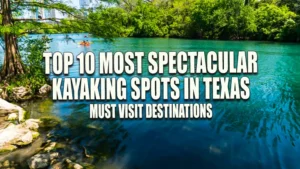







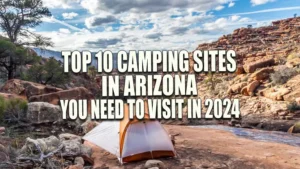

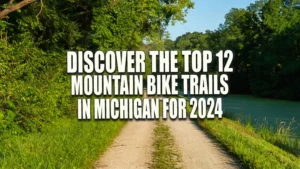

Leave your comment